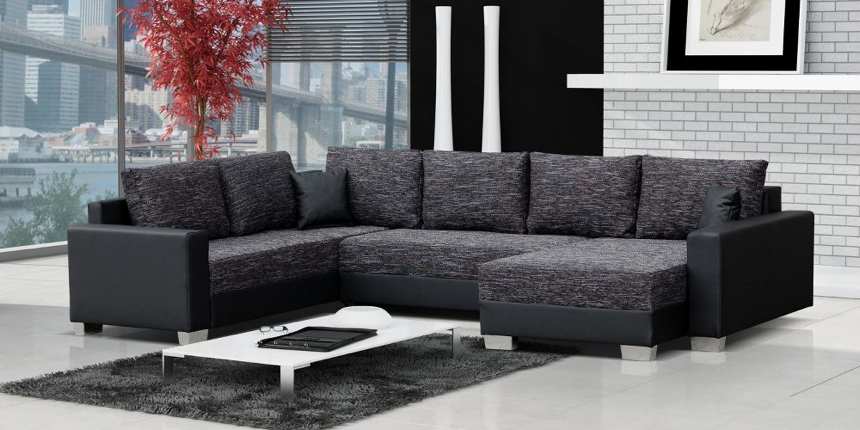Our Guide to Buying a Sofa

August 13, 2013
By Chris Perrett
Buying a new sofa can be the third biggest investment after a new house or car and often lasts far longer than other significant purchases we make like TVs and appliances. Unlike electricals, it’s very difficult to compare like-for-like so it tends to be done on a store-level. We’ve put together a simple buying guide to help you through the process of buying a new sofa so you can get the best one for you.
By setting your budget from the start, you’ll know exactly which stores you should start your search at and this is our top tip in our guide to buying a sofa. You may also realize at this point that it may be worth waiting to add some more cash to the pot so that you can increase your budget, or that you’ll wait for the next sale so you can get a bargain at a more expensive store. When you’ve finally found the perfect sofa, you’ll also find it much easier to negotiate a deal with the store if you have a set amount of money you can spend.
When you start your search in-store you can then take these measurements with you, along with a tape measure, which allows you to instantly rule out any sofas that are too large. There’s really nothing worth than falling in love with a sofa and then realizing it’s too big for the space available, or worse buying it and then feeling swamped by it when it’s in your home.
Leather is broken down based on how it’s treated, with Aniline leather being the most susceptible to staining. This is because it’s had far less treatment than others and so doesn’t have the same man-made protective covering. These tend to be characterized by variations in colour and are often more expensive, but you will struggle to even remove simple water stains. Leather, which has been treated, tends to look more uniform in colour and is extremely hard-wearing, making this type of leather sofa perfect for party rooms or living rooms that the kids use with friends.
Fabrics, like leather, can be made up of both man-made and natural fibres (such as wool or cotton) – the general rule is that the more natural the material, the less likely it is to resist stains. Many companies selling sofas such as John Lewis also offer a stain guard on some materials and not on others, so again it’s worth deciding what type of material you want as well as how it’ll be used, before selecting the final fabric to go for.
After whittling down the choices based on comfort and being sure it’s the right size and on budget, you should then make the final decision on the material as this may rule it out completely, which will mean you’ll need to reassess the top choices again. Our key tip here is to ask for a sample of either the fabric or leather that you’re interested in so you can do your very own stain test at home. The first test should be to add some water and then dab it up immediately so you can check for watermarks. You should then repeat this, but leave the water on the material for around a minute to replicate the scenario of rushing into the kitchen to grab a towel or paper to mop the stain up with. Finally, try some common liquids that may get spilt such as red wine or black coffee and see how the material holds up.
After deciding on a sofa and being happy that it ticks all of the boxes based on budget, size, use and material, now’s the time to get some money knocked off. This may not be possible in some stores and if this is the case they’ll tell you outright. However, you should be able to in around 80% of them and if it’s not a discount, you may get stain protection or a matching footstool thrown in. You should then compare this final price/deal to what you’d pay for the sofa if you bought it online, in case there’s a discount code available for example. It’s then time to buy the sofa and to finally sit back and relax while you wait for it to arrive.
Step 1 – Decide on your budget for a new sofa
Many people make the first mistake of wanting a new sofa and then heading straight out to look at the options available. The biggest problem is that with such a wide choice available, it’s all to easy to get your heart set on one which you can’t afford. Prices vary hugely, from the mid-hundreds at the likes of DFS to the low thousands at contemporary furniture stores such as Heal’s and Multiyork. There’s a very good reason for this as the more you pay, the more bespoke it’s likely to be.By setting your budget from the start, you’ll know exactly which stores you should start your search at and this is our top tip in our guide to buying a sofa. You may also realize at this point that it may be worth waiting to add some more cash to the pot so that you can increase your budget, or that you’ll wait for the next sale so you can get a bargain at a more expensive store. When you’ve finally found the perfect sofa, you’ll also find it much easier to negotiate a deal with the store if you have a set amount of money you can spend.
Step 2 – Measure up the space available for your sofa
Sofas often look far smaller in the store environment than they actually are, partly because of the scale of the stores, with many being out of town warehouses essentially. The other reason is that a large sofa can look small next to an enormous one, which again is all down to a sense of scale. You should measure the space available for your new sofa, with the key dimensions including the width from arm-to-arm, depth (front to back) and height. Height is especially important if you’re planning to place your sofa in front of a window, to ensure that the back doesn’t eat into the light entering your room.When you start your search in-store you can then take these measurements with you, along with a tape measure, which allows you to instantly rule out any sofas that are too large. There’s really nothing worth than falling in love with a sofa and then realizing it’s too big for the space available, or worse buying it and then feeling swamped by it when it’s in your home.
Step 3 - Thing about how the sofa will be used
This may sound obvious as the reason of a sofa is for sitting, but what we mean by this is in what context will it be used. For example, are you looking to use it to provide additional sleeping space, will it be used in a room you use for formal entertaining, or will it be in a room you tend to throw a few parties in. If it’s likely to have very heavy use, you may decide to go for a particular material to ensure it stands up to stains without looking worn out after just a few months.Step 4 – Decide on materials for your new sofa
Materials for sofas tend to be segmented into two distinct categories – fabric and leather. Simple hey – well not quite as simple as you’d expect as there are further sub-categories within these groups.Leather is broken down based on how it’s treated, with Aniline leather being the most susceptible to staining. This is because it’s had far less treatment than others and so doesn’t have the same man-made protective covering. These tend to be characterized by variations in colour and are often more expensive, but you will struggle to even remove simple water stains. Leather, which has been treated, tends to look more uniform in colour and is extremely hard-wearing, making this type of leather sofa perfect for party rooms or living rooms that the kids use with friends.
Fabrics, like leather, can be made up of both man-made and natural fibres (such as wool or cotton) – the general rule is that the more natural the material, the less likely it is to resist stains. Many companies selling sofas such as John Lewis also offer a stain guard on some materials and not on others, so again it’s worth deciding what type of material you want as well as how it’ll be used, before selecting the final fabric to go for.
Step 5 – Test drive sofas you like & negotiate
The final step in our guide to buying a new sofa is to go out and try some sofas rather than just looking online. It’s great to start the search online to find some options as well as to read reviews on both the sofas and companies selling them, but don’t rely solely on it. You should go out armed with your measurements, knowledge of your budget available and with the use of it in the back of your mind. The main variation you’ll often find when actually trying the sofa in-store is that seat length, as many cater for a person of ‘average’ height, which means if you’re slightly either side of this you may find it’s too short or long to be able to sit comfortably. It’s great to try the sofa in the way you’d use it in your home, for example not many of us will sit directly upright and so if you don’t tend to do it, why not trying cuddling up into a corner or stretching your legs out.After whittling down the choices based on comfort and being sure it’s the right size and on budget, you should then make the final decision on the material as this may rule it out completely, which will mean you’ll need to reassess the top choices again. Our key tip here is to ask for a sample of either the fabric or leather that you’re interested in so you can do your very own stain test at home. The first test should be to add some water and then dab it up immediately so you can check for watermarks. You should then repeat this, but leave the water on the material for around a minute to replicate the scenario of rushing into the kitchen to grab a towel or paper to mop the stain up with. Finally, try some common liquids that may get spilt such as red wine or black coffee and see how the material holds up.
After deciding on a sofa and being happy that it ticks all of the boxes based on budget, size, use and material, now’s the time to get some money knocked off. This may not be possible in some stores and if this is the case they’ll tell you outright. However, you should be able to in around 80% of them and if it’s not a discount, you may get stain protection or a matching footstool thrown in. You should then compare this final price/deal to what you’d pay for the sofa if you bought it online, in case there’s a discount code available for example. It’s then time to buy the sofa and to finally sit back and relax while you wait for it to arrive.












